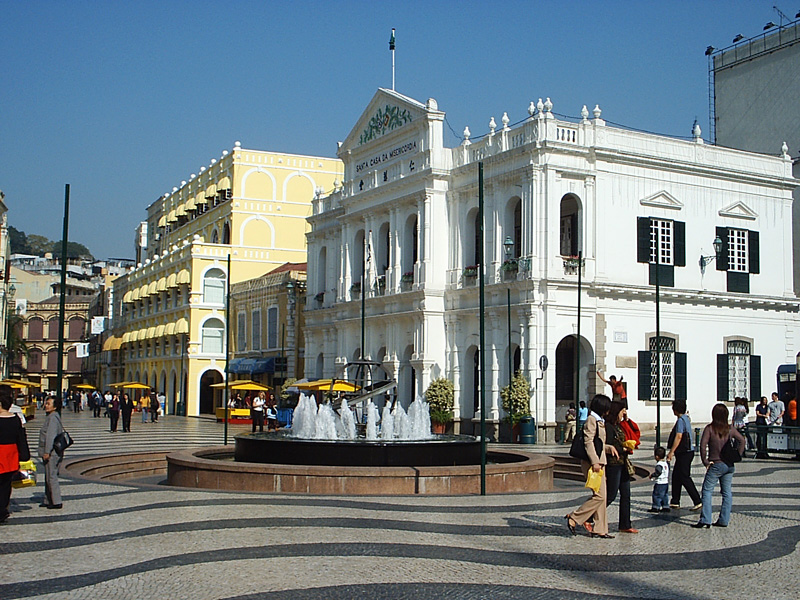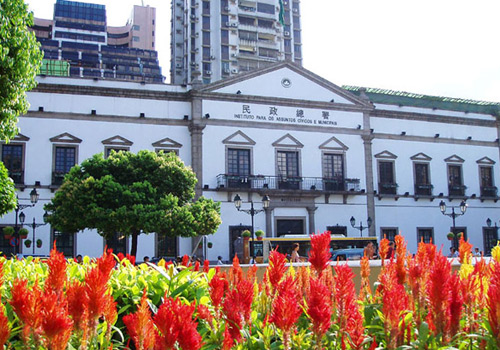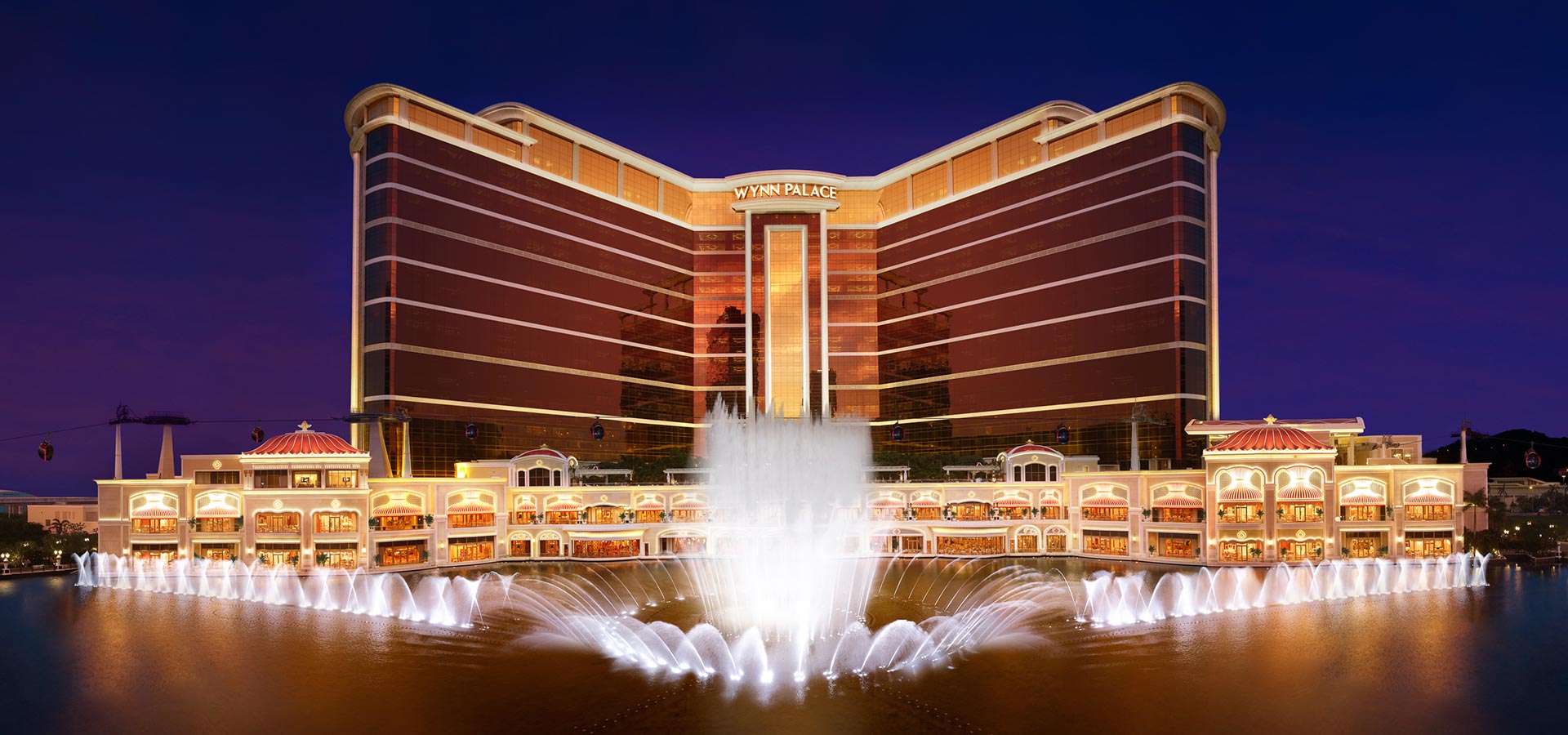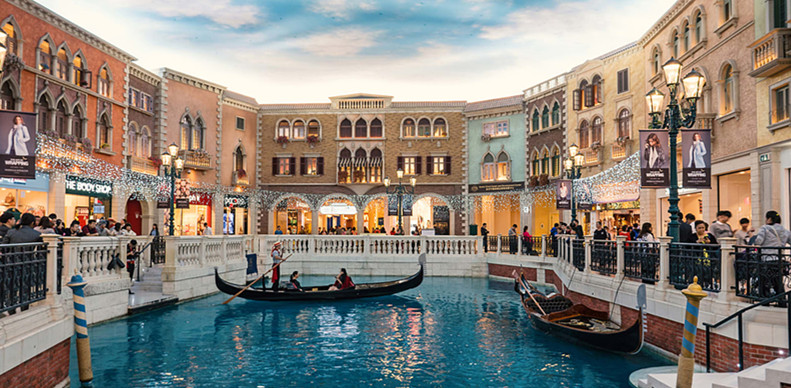

Please arrange your schedule as per below brief program. The full version will be updated in the early February 2025.
The first day is all about registration, participants are supposed to sign in at the conference venue and collect all the conference materiails at the registration counter on this day. However, the registration is still open on the 2nd day of the conference.
The conference chair will be hosting a opening ceremony in the morning, and all the participants are supposed to be there, then the keynote speakers will deliver their spectacular speeches and share their cutting-edge research fruits with the participants. During the intermission, there will be a photo session for all the participants to take a group photo.
Participants' presentations are divided into different sessions based on the conference topics, participants should find the right session room and be there earlier to copy his ppt/pdf presentation into the laptop and get ready. Then the session chair will start the session on time, and give a grade to each presentation, which should be within 15 minutes, including Q&A. After all the sessions are finished, the best papers will be announced, and the certificates will be awarded. However, due to some participants' early departure, best presentation may be selected and announced right after each session ends.
Macau (/məˈkaʊ/ (About this sound listen)), also spelled Macao and officially the Macao Special Administrative Region of the People's Republic of China, is an autonomous territory on the western side of the Pearl River estuary in East Asia. Macau is bordered by the city of Zhuhai in Mainland China to the north and the Pearl River Delta to the east and south. Hong Kong lies about 64 kilometres (40 mi) to its east across the Delta.[5] With a population of 650,900[3] living in an area of 30.5 km2 (11.8 sq mi), it is the most densely populated region in the world. A former Portuguese colony, it was returned to Chinese sovereignty on 20 December 1999.
Please note the below arrangement is just for your
reference,not the final confirmed schedule. The detailed arrangement
will be udpated in the early of February 2025.
.
1. Pick up from Hotel
Note: The participants who enrolled city visit please arrive at conference Hotel at 8:45 on time. The itinerary is subject to the actual schedule of the day. In addition, as the seat of the business van is full, please don't take large suitcases to travel.
2. The Ruins of the Cathedral of Saint Paul
 The Ruins of St. Paul's (Chinese: 大三巴牌坊; Portuguese: Ruínas de São Paulo) are the ruins of a 17th-century complex in Santo António, Macau, China. It includes what was originally St. Paul's College and the catholic Church of St. Paul also known as "Mater Dei", a 17th-century Portuguese church dedicated to Saint Paul the Apostle. Today, the ruins are one of Macau's best known landmarks. They are often, but incorrectly, mentioned as a former cathedral (see Macau Cathedral), a status they never had. In 2005, they were officially listed as part of the Historic Centre of Macau, a UNESCO World Heritage Site.
The Ruins of St. Paul's (Chinese: 大三巴牌坊; Portuguese: Ruínas de São Paulo) are the ruins of a 17th-century complex in Santo António, Macau, China. It includes what was originally St. Paul's College and the catholic Church of St. Paul also known as "Mater Dei", a 17th-century Portuguese church dedicated to Saint Paul the Apostle. Today, the ruins are one of Macau's best known landmarks. They are often, but incorrectly, mentioned as a former cathedral (see Macau Cathedral), a status they never had. In 2005, they were officially listed as part of the Historic Centre of Macau, a UNESCO World Heritage Site.
3. Largo do Senado
 The Senado Square, or Senate Square (Portuguese: Largo do Senado; Chinese: 議事亭前地, Cantonese Yale: Yíh Sih Tìhng Chìhn Deih), is a paved town square in Sé, Macau, China and part of the UNESCO Historic Centre of Macau World Heritage Site. It is an elongated triangular shaped square and connects Largo do São Domingos at one end and Avenida de Almeida Ribeiro on the other. It covers an area of 3,700 square meters (4,425 square yards).
The Senado Square, or Senate Square (Portuguese: Largo do Senado; Chinese: 議事亭前地, Cantonese Yale: Yíh Sih Tìhng Chìhn Deih), is a paved town square in Sé, Macau, China and part of the UNESCO Historic Centre of Macau World Heritage Site. It is an elongated triangular shaped square and connects Largo do São Domingos at one end and Avenida de Almeida Ribeiro on the other. It covers an area of 3,700 square meters (4,425 square yards).
The square was named after the Leal Senado, a meeting place for the Chinese and Portuguese in the 16th to 18th centuries, located directly in front of the square, where Leal Senado Building stands today.
In 1940, a small garden was built at the centre of the square, featuring a bronze statue of Vicente Nicolau de Mesquita standing above a stone pillar pulling out a sword. The statue was pulled down in the 12-3 incident as Mesquita was responsible for the deaths of many Qing Chinese soldiers. A fountain was built at its site and still stands today. Vast majority of the buildings around the square are European styled and many are protected monuments. The square used to allow traffic and parking lots were present, with increasing number of tourists the entire area was covered by Portuguese pavement in the early 1990s and designated a pedestrian-only zone.
Many large events in Macau were hosted on the square, this include festival celebrations, flea markets and performances. The governors of Macau also used to inspect their troops there. A number of Hong Kong films in the 1950s and 1960s had scenes shot at the square.
The 2005 100 patacas note issued by the Banco Nacional Ultramarino features the square on its obverse side.
4. Leal Senado Building
 The Leal Senado Building (Portuguese for Loyal Senate) was the seat of Portuguese Macau's government (Legislative Assembly of Macau and Municipal Council of Macau). It is located at one end of the Senado Square in São Lourenço, Macau, China. The title was bestowed on Macau's government in 1810 by Portugal's Prince Regent João, who later became King John VI of Portugal. This was a reward for Macau's loyalty to Portugal, which refused to recognise Spain’s sovereignty during the Philippine Dynasty that it occupied Portugal, between 1580 and 1640. A plaque ordered by the king commemorating this can still be seen inside the entrance hall.
The Leal Senado Building (Portuguese for Loyal Senate) was the seat of Portuguese Macau's government (Legislative Assembly of Macau and Municipal Council of Macau). It is located at one end of the Senado Square in São Lourenço, Macau, China. The title was bestowed on Macau's government in 1810 by Portugal's Prince Regent João, who later became King John VI of Portugal. This was a reward for Macau's loyalty to Portugal, which refused to recognise Spain’s sovereignty during the Philippine Dynasty that it occupied Portugal, between 1580 and 1640. A plaque ordered by the king commemorating this can still be seen inside the entrance hall.
A Chinese-style Pavilion used to stand on the site of Leal Senado
building. That building was then a meeting place for the Portuguese and
the Chinese officials,and where the Ming dynasty government would
announce regulations to Macau. The Portuguese planned to buy the
pavilion as early as 1583, as well as some Chinese houses behind it.
However, it wasn't until 1784 that the Portuguese government finally
purchased it at a price of 80,000 taels.
The Leal Senado building itself was built after the purchase, and became
the center of Macau's politics since then. Portuguese rallies and
celebrations were also held here. Although built in 1784, it was in a
style similar to plain style from 14th- to 15th-century Portugal than
the Pombaline style that was popular at the time when the Leal Senado
was built. A number of institutions were affiliated to the building,
including a museum of Luís Vaz de Camões, a post office, a court and a
prison, yet all had moved elsewhere.
It was completely refurbished in 1904. In 1936 the building was damaged
again by another typhoon. After the handover of Macau to China in 1999
it became the headquarters of the Institute of Civic and Municipal
Affairs. It became part of the UNESCO World Heritage Site Historic
Centre of Macau in 2005.
5. Wynn Macau
 Wynn Palace (Chinese: 永利皇宮) is the second luxury
integrated resort from international resort developer Wynn Resorts in
the Macau Special Administrative Region of the People's Republic of
China, following the launch of Wynn Macau. Located in the Cotai Strip
area, it features a 28-story hotel with 1,706 exquisitely furnished
rooms, suites and villas, versatile meeting facilities, over 106,000
square feet (9,800 m2) of luxury retail, 11 casual and fine dining
restaurants, Macau's largest spa, a salon, a pool and approximately
420,000 square feet (39,000 m2) of casino space. The resort also
features a variety of entertainment experiences, including the 8-acre
Performance Lake with a choreographed display of water, music and light,
the unique SkyCab, spectacular, large-scale floral displays by renowned
designer Preston Bailey and an extensive collection of art works by some
of the world's leading artists.
Wynn Palace (Chinese: 永利皇宮) is the second luxury
integrated resort from international resort developer Wynn Resorts in
the Macau Special Administrative Region of the People's Republic of
China, following the launch of Wynn Macau. Located in the Cotai Strip
area, it features a 28-story hotel with 1,706 exquisitely furnished
rooms, suites and villas, versatile meeting facilities, over 106,000
square feet (9,800 m2) of luxury retail, 11 casual and fine dining
restaurants, Macau's largest spa, a salon, a pool and approximately
420,000 square feet (39,000 m2) of casino space. The resort also
features a variety of entertainment experiences, including the 8-acre
Performance Lake with a choreographed display of water, music and light,
the unique SkyCab, spectacular, large-scale floral displays by renowned
designer Preston Bailey and an extensive collection of art works by some
of the world's leading artists.
Wynn Resorts is the recipient of more Forbes Travel Guide Five Star
Awards than any other independent hotel company in the world. Wynn
Palace is the first and only resort in the world with more than one
thousand rooms to receive Forbes Travel Guide Five Star Awards. Wynn
Palace opened on August 22, 2016
6. Handover Gift Museum of Macau
The Handover Gifts Museum of Macao (Chinese: 澳門回歸賀禮陳列館; Portuguese: Museu das Ofertas sobre a Transferência de Soberania de Macau) is a museum to commemorate the transfer of sovereignty over Macau in Sé, Macau, China.
The construction of the museum started in March 2003 and was completed in October 2004. The museum was then officially opened on 30 December 2004.
The museum is a three-story building. The first floor is the lobby, entrance and administrative offices of the museum. The second floor is the handover gifts exhibition gallery and the special exhibition gallery. The third floor is the auditorium.
7. The Venetian Macau
 The Venetian Macao (Chinese: 澳門威尼斯人) is a luxury hotel and casino resort in Macau owned by the American Las Vegas Sands company. The Venetian is a 39-story, casino hotel on the Cotai Strip in Macau. The 10,500,000-square-foot (980,000 m2) Venetian Macao is modeled on its sister casino resort The Venetian Las Vegas. The Venetian Macao is the largest casino in the world, the largest single structure hotel building in Asia, and also the seventh-largest building in the world by floor area.
The main hotel tower was finished in July 2007 and the resort officially opened on 28 August 2007. The resort has 3,000 suites, 1,200,000 sq ft (110,000 m2) of convention space, 1,600,000 sq ft (150,000 m2) of retail, 550,000 square feet (51,000 m2) of casino space – with 3,400 slot machines and 800 gambling tables and the 15,000-seat Cotai Arena for entertainment and sports events.
The lead architect for the Venetian Macao were Aedas and HKS, Inc. joint venture, who were responsible for the design, coordination and implementation of the project on site.
The Venetian Macao (Chinese: 澳門威尼斯人) is a luxury hotel and casino resort in Macau owned by the American Las Vegas Sands company. The Venetian is a 39-story, casino hotel on the Cotai Strip in Macau. The 10,500,000-square-foot (980,000 m2) Venetian Macao is modeled on its sister casino resort The Venetian Las Vegas. The Venetian Macao is the largest casino in the world, the largest single structure hotel building in Asia, and also the seventh-largest building in the world by floor area.
The main hotel tower was finished in July 2007 and the resort officially opened on 28 August 2007. The resort has 3,000 suites, 1,200,000 sq ft (110,000 m2) of convention space, 1,600,000 sq ft (150,000 m2) of retail, 550,000 square feet (51,000 m2) of casino space – with 3,400 slot machines and 800 gambling tables and the 15,000-seat Cotai Arena for entertainment and sports events.
The lead architect for the Venetian Macao were Aedas and HKS, Inc. joint venture, who were responsible for the design, coordination and implementation of the project on site.
© The 2025 11th International Conference on Learning and Teaching (ICLT 2025)